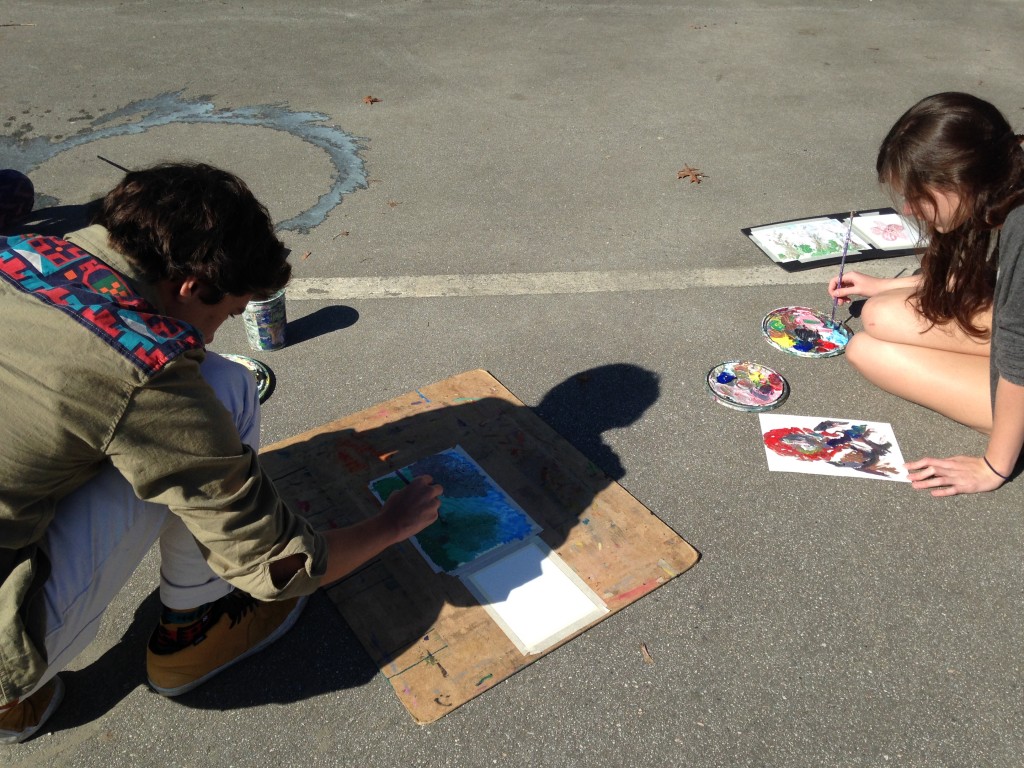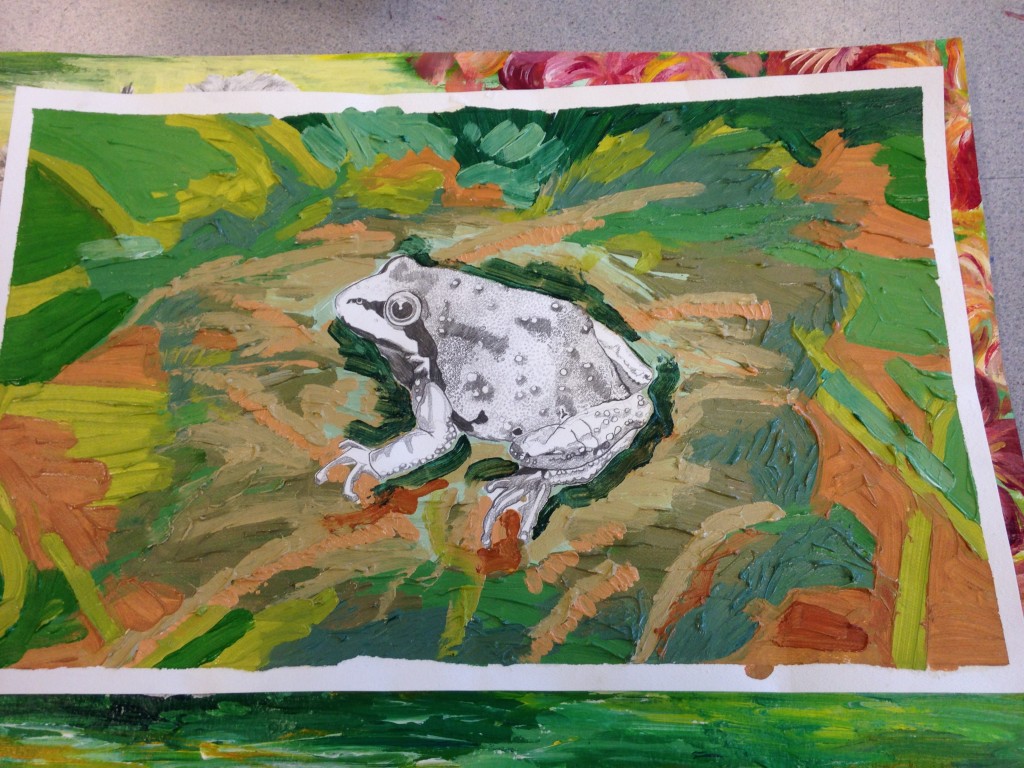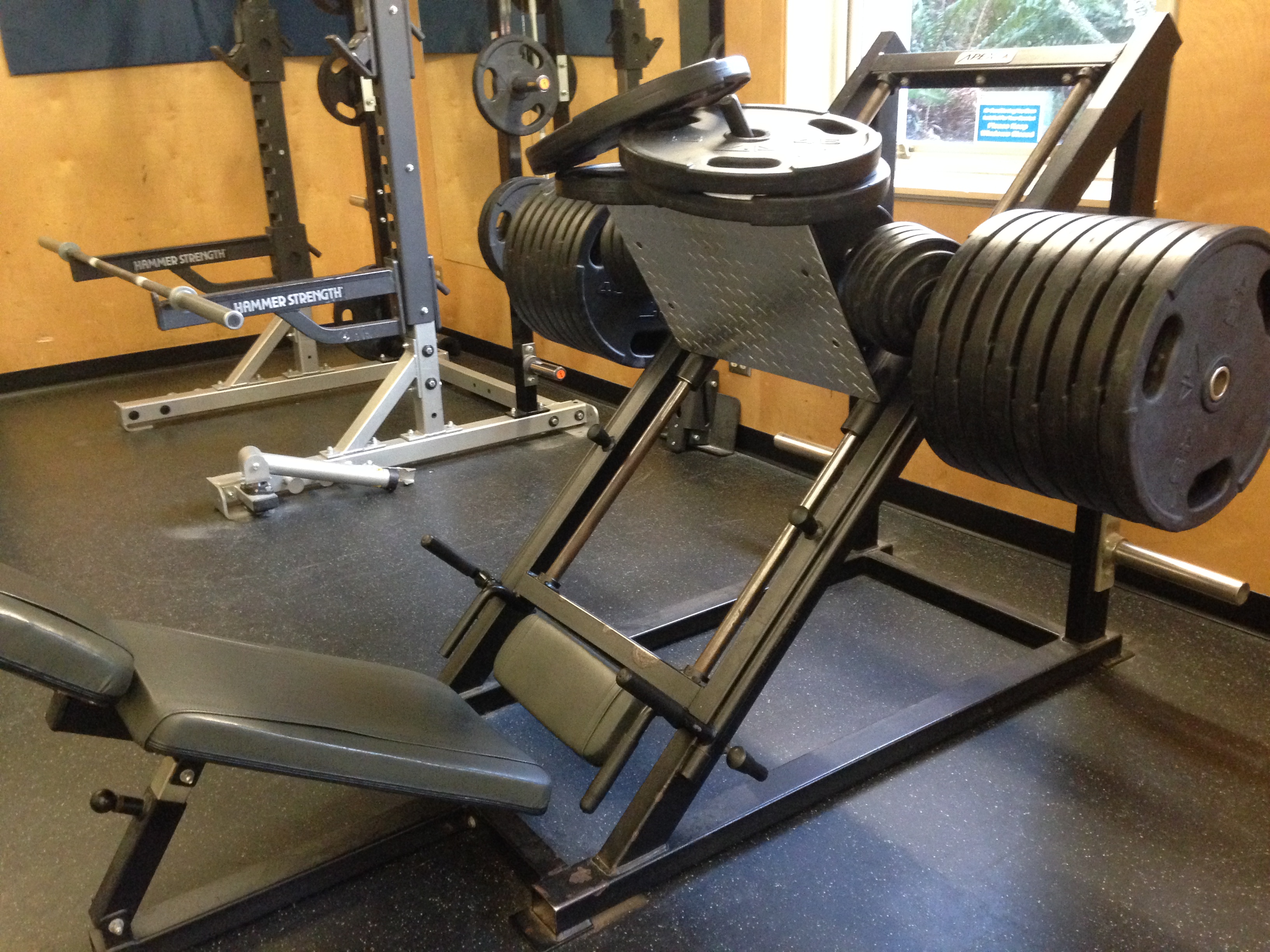My peers and I worked to create a series of pinhole camera lessons, mixing science and the photography art-form together. The video documents our collaboration process. Along with photography and physics, we also imagined that biology, chemistry, social studies and more could be brought into such a project. I certainly learned a lot. I know others would benefit from this sort of collaboration as well!
Tag Archives: media arts
How do you teach values? Should values be taught?
Exploring the meanings and uses of Knowledge.
Community Field Experience
Teaching Practicum Week 8
To summarize my practicum so far:
Units taught in Media Arts: Interview Unit (5 lessons), Storyboard + Film the Storyboard Unit (10 lessons), Pixilation Animation Unit (6 – 8 lessons). Visual Storytelling (1 class), Camera Tech (1 class), Scavenger Hunt (2 classes), Montage (4 classes), Commercial Re-edit (5 classes).
Units taught in Visual Arts: Gestural Drawing (4 lessons), Wind Sculptures (4 lessons), Land Art (3 lessons), Comic Book Page (6 – 8). Gestural Drawing (3 lessons), Memes (4 lessons), Fictional Creature Illustration (5 – 7). Implied Texture (3 lessons), Actual Texture (3 lessons), Final Textural Piece (6 lessons).
16 hours working with teacher and student crew filming short film entitled “I am William”. Principal Photography – the shooting of all the scenes.
4 hours setting up the Senior Visual Arts Show in the school gallery, hanging artwork, and arranging pieces.
Handling diversity. Art education allows for accommodation of variety of learners. Concepts were taught visually (visual aids like slide shows, movie clips, posters, visual demonstrations/exemplars) and kinetically (games, activities, outdoor excursions), vocally (short lecture on artists, directors, history of visual culture), as well as through written communication (handouts for students to fill out reciting terminology, and self-reflection/self-evaluation).
Media Art required extensive group work because of limitations of how much equipment must be shared by entire class. Students were randomly assigned groups at first, and then the process organically arrived at students choosing their own groups, which allowed for (surprisingly) more controlled and positive group dynamics.
Similar process in Visual Arts classes – I began by trying random grouping (numbering off students into random groups) and then found that by letting them select groups themselves, they were happier and more productive every time.
Think-pair-share was used on several occasions to encourage more class participation in questioning/discussion times, but I found that overall vocal students remained vocal, while less vocal students remained less vocal.
Hooks and Teaching Strategies overlapped – they became one and the same for me. I strategize, manage and hook students into participating by implementing some sort of visual/oral/activity in conjunction with lecture and work time every class.
Technology used in almost every class (projectors hooked to computers, using visuals and sound). Creating visually engaging slide presentations and including student work in some of those slide presentations.
The most difficult technological issue is trying to keep one step ahead of students learning about film equipment and software in Media Arts classes. I made substantial progress in that realm – I know much more about the software and hardware now, and feel confident that I have a strong base in that knowledge.
Field trips to a nearby park/trail (several blocks away from school, able to leave and return within the same period) and outdoor filming/drawing/showcasing sessions on school property.
I feel that I share many common interests with the students in the realm of Media and Visual Culture. It is a matter of making them become more conscious of why that Media is of interest to them. Showing familiar images (of memes, popular videos, popular advertisements) hook their attention, and then it is a matter of having students discuss the importance of that visual culture around us by posing them the right questions.
The Land Art lesson, after students had learned about Land Artists, and after they had gone out and made work of that kind themselves, went very well. We debriefed on the work they had created, looking at photographs of the ephemeral pieces, and discussed what worked/what did not work so well. The lesson then segued smoothly into Land Art created by past and current cultures, current incarnations of Land Art with First Nations influence (Rock Art, Inuksuks, etc.), and then First Nations oral storytelling into Visual Storytelling (comics). In one class, we accomplished so much. Students saw the importance of temporary work that they had made, its connection to ‘the big picture’ of the entirety of art history, the importance of past and contemporary aboriginal art-making, and then a new perspective on what it means to tell a story visually – more than just a silly comic strip. A group storytelling activity also allowed them to experience the ease of making up stories on the spot.
I am always friendly. I strive to be more stern in terms of consequences, but for the most part, I give reasons to students for each thing I ask of them (assignments must be on time because we all must move on towards new concepts at a steady pace…tell me if you are leaving the classroom because I am responsible for your safety in and outside of the classroom, etc). I think that reward is more positive than punishment.
Collaborative Days included meetings that allowed teachers from different departments to meet over the common goals of helping out/sorting out issues with particular students.
Professional Development Day involved going to a workshop that dealt with bullying – particularly in the case of aboriginal students, but the role-playing scenarios explored at the workshop could definitely be applied to all diversity of students.
Assessment is constantly morphing and progressing. Depending on the group, students can be more inclined towards self-evaluation, being aware and fair about how well they worked on projects, while other groups I handle the marks entirely (although students are always free to discuss a mark with me).
Teaching Practicum Week 2
Questioning students in order to initiate discussion around various themes and subjects was more challenging than I originally thought, but by the end of this week, I was able to generate student engagement with pre-determined questions. During each class, I showed news, movie and television clips that related to filming and editing interviews. I wrote down lists of questions that began as simple (can you describe to me what the person said in this clip?) and then moved towards being more abstract (what is your opinion on the subject of this clip?). I knew that it was working because students were actually beginning to speak when I asked questions. I felt pleased that I could begin to create more rapport with the students in this way.
I was also happy that my attempt at learning student names more effectively worked. I took attendance throughout the entire period, meeting with students individually rather than calling names at the beginning of class. I immediately started remembering names and faces more easily. I also had a chance to discuss work and answer questions when seeing them individually.
On the subject of establishing different classroom routines than what students are used to, I managed to implement the ‘computer monitors off’ directive on several occasions. Students did not seem too perturbed by this, and I think it helped in maintaining quietness. It did seem peculiar, however, that they stared towards the empty screens rather than looked at me when I was teaching.
My personal goal for this upcoming week includes being more tough about project completion and student use of classroom work time.
On Friday afternoon, I was supposed to view completed interview projects with the class. I was very disappointed to find that only one group was ready to present their work, despite being under the impression that many more would be ready from last class. Many of the students who were not ready had spent prior periods wasting time playing video games or watching silly videos, and claimed to me that they would be able to edit things together quickly ‘later’ or at home. It was not a surprise, yet it was still disheartening to find out that they had not in fact quickly edited things together ‘later’. Most groups, even though I had seen them filming, had no edited clips to show at all.
Knowing very well that I had given ample time to complete the project, I nonetheless allowed students to work on editing for one more period. On this particular occasion, I circulated actively around the classroom, conveying to students assertively that they must finish their work.
I think it will be a challenge to apply just the right amount of strictness and pressure concerning upcoming projects and their completion.
Interview Project
My first project during my long practicum has been going pretty well. Here’s the assignment description I gave to students:
In groups, film each other being interviewed. Answers should only be about 30 seconds long.
We will discuss as a class what some techniques for creating an interesting interview might be. Make sure to implement some of these techniques in your filming (dynamic camera angles, formal and informal styles, etc).
Film each question in a different outdoor location. For example, the group will find filming location #1 and take turns filming each member answering question #1. They will then find filming location #2, and film everyone answering question #2, and so on.
Here are the interview questions. Each student in the group should answer all four questions:
What is your best idea for an invention that the world needs today?
What good deed have you done that you are most proud of?
What is your most important long-term goal?
What is the most interesting fact you know?
Teaching Practicum Week 1
This first week was filled with an endless assortment of surprises, fiascos, setbacks, and shockers. My focus before having taught any classes was to create lesson plans with substance in them, and to deliver that raw information effectively. I see now that there is actually an intermediary between those two tasks that dominates the end results entirely; that is, my presence as a teacher in and outside of the classroom.
So far, I have worked with two Media Arts classes. The lesson objectives for both involved motivating students to produce filmed interviews of each other, working in groups. For the most part, the purpose of projects in Media Arts class is to encourage students to practice their filmmaking skills by using camera equipment and editing software. I don’t really have to worry about chronological sequencing of projects, as students have already been introduced to equipment and software, so this project made sense as an introductory activity in the way that I could learn some interesting facts about them.
Right away, I knew it would be a struggle to implement theoretical instruction in this very hands-on class. Initially, my emphasis was on lively content that students could relate to, and I still think that is the way to go – although I realize now that conveyance of content is everything. Particularly, I’ve come to recognize that questioning students is the best, but also the most challenging way to communicate ideas. I have to continue working on posing questions throughout lessons that provoke student interest and discussion. So often with peers at UBC, discussions can be initiated by vague statements or imprecise queries. I learned this week that this is not so with secondary students; they require a succession of simple, explicit questions that can perhaps build into more complicated, abstract concepts. So far, my questioning elicits very little reaction and discussion from students, and it requires a lot of work.
Another difficulty associated with the Media Arts class in particular is students having access to the computers while I am instructing. Normally, they are not required to have monitors off while the teacher is instructing, but I am finding that students are distracted greatly by the presence of the computers while I’m trying to teach. I am starting to realize how my own teaching style may have to diverge from some of the established norms of the Media Arts room. In the upcoming week I would like to implement some new routines during class such as having students power-off the monitors before I instruct, and more strict regulation regarding when they can take out the film equipment (for example, they can only start filming once the group has downloaded all previous footage on the camera onto the computer).
On a positive note, I feel that I have gained a lot of technical knowledge in just this one week. The cameras, the computer software, the projector set-up, and all the related wiring were enormously intimidating before I started teaching, but now they are starting to make sense, and I can set things up quickly.
My goals in the upcoming week include strengthening my questioning capabilities by writing down larger lists of questions in my lesson plans. I would like to ‘toughen up’ my relationship with students in both Media Arts classes by establishing my own classroom routines, how they differ from the procedures they are used to, and why they are important. Finally, I would also like to attempt a new method for learning names. I would like to take attendance throughout the period by speaking to each student individually before the end of class. This method should allow me to connect with students more personally, learn their names more effectively, and aid in the assessment process as well, which relies heavily on personal reflection and student-teacher discussion.







